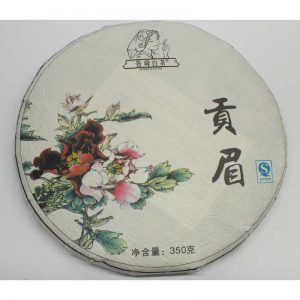
About White Tea
Fermentation: Lightly fermented
Growing Regions: Fujian, Jejien
Best Seasons To Purchase: Spring and Summer
Pharmacological Elements: Polyphenols, amino, potassium, calcium, magnesium, zinc, manganese, catechin, gallic acid, theobromine and caffeine
Most Popular Varieties:
1.White Peony White Tea (Bai Mu Dan)
2.Silver Needle White Tea (Bai Hao Yin Zhen)
WHITE TEA
1. White Tea is one of China’s special treasures, made from the youngest and most tender hand-picked leaf tips and buds. These give a fresh and delicate flavour and a snowy/silver coloured brew from which White Tea gets its name. Because of the laborious and detail oriented process, it’s also one of the most expensive teas produced.
White Tea is mainly produced in the Jianyang, Fuding and Songxi counties in Fujian Province. These hilly territories with their red and yellow mountain soils, year round mild climate and abundant rainfall (in Fuding for example, the average annual temperature is 18.5°C / 65.3°F and annual precipitation is about 1660 mm/65 inches), contribute to White Tea’s unique character. Taiwan also produces a small amount of White Tea.
2. The most popular types of White Tea are White Peony and Silver Needle (Bai Hao). White Peony that is made from the first and second tips of a tea stem is the best quality and gets its name from the way the brewed leaves seem to bloom like the buds of the first flowers in springtime.
Silver Needle is the most expensive of the White Teas. It is made only from the single tips of the tea stem which when dried, look like silver needles. The tea has a light yellow colour and refreshing taste and aroma.
Production of White Tea
The production process is generally divided into 3 steps:
Withering
Picked leaves are spread out (inside and/or outside in the sun) to soften the cell walls of leaves. This draws the moisture to the surface for evaporation, softens the leaves, begins natural enzymatic fermentation and sets up the next stage of processing. This also reduces the grassy taste of tea leaves. The key to making excellent White Tea lies in the withering which is further divided into outdoor and indoor steps. The best combination seems to be outdoor withering of the leaves on a mild summer day, followed by further withering done inside. The stems are then removed from the leaves, the natural waxy film coating is removed and they are slow-fire baked until dry. When the moisture content is reduced to about 4% to 5% , the leaves are then packaged.
“Kill-Green” (also known as Fixing”)
Stops the natural fermentation and growing processes within the leaves without damaging them. Steaming the leaves, hand pressing in a hot pan and baking techniques are used. This also sets up the next step for Rolling/Forming the leaves.
Rolling/Forming
Leaves are passed through hot and/or cold rollers to slightly break down the leaves, which establishes the shape of the leaves and intensifies the tea flavour.
Drying
Establishes the final moisture content of the leaves, stops fermentation, prevents mold growth, removes any grassy leaf taste and develops the tea’s aroma. Sun drying, pan heating and hot air methods are used.
A Quick History of White Tea
1. White Tea first appeared in the Northern Song Dynasty (960 – 1127). It was during this period that the first paper money and gunpowder were used and a standing navy and the location of true north on a compass were first established.
2.The first mention of White Tea appeared in “Treatise on Tea”, written by the Emperor Huizong (1107-1110). A tea connoisseur, White Tea was his favourite and his book included highly detailed descriptions and rules for the making and judging of tea.
3.In 1769, the first Silver Needle Pekoe Tea was developed and in 1857, tea plants were found in Fuding County in Fujian which yielded a superior White Tea. In 1885, Silver Needle Tea was developed and then White Peony Tea in 1922. In 1968 the first exports of White Tea were made possible by new techniques of growing and processing.
White Tea And Health Benefits
1. Very high Anti-Oxidation
2. cancer-prevention due to tea’s anti-oxidant properties
3. Reduce High Blood Pressure
4. Good for Skin
5. Stonger the Bones
6. Can reduce inflammation caused by rheumatoid arthritis
7. Can control insulin secretion. Prevent Diabetics
8. High source of Vitamin A, can prevent dry eyes and night blindness
9. Can reduce radiation levels and repair DNA damage
10.Reduce Cholestrol
11.Helping Sleep or insomia
12.Reduce Stress
13.Reduce Toxicity in the body.
-
AWT20 White Peony Fuding Tea (Bai Mudan) 100g Year 2019
RM 50.00Tea weight: 100g, Packaging: 151g, Gross weight: 251g
-
AWT19 White Peony Fuding Tea (Bai Mudan) 200g Year 2016
RM 60.00Tea weight: 200g, Packaging: 50g
, Gross weight: 250g












